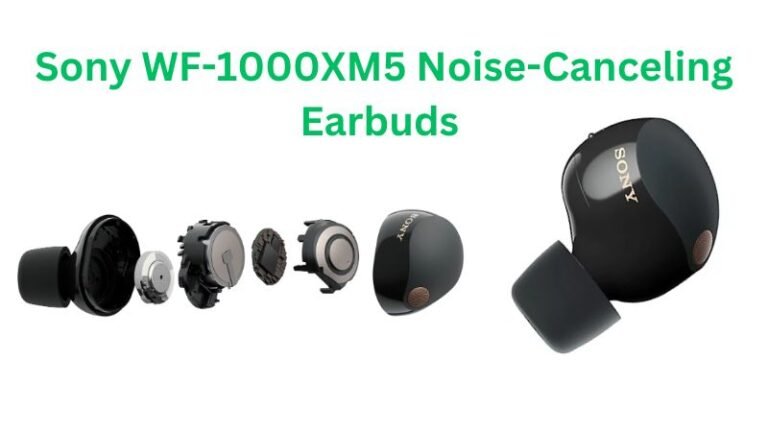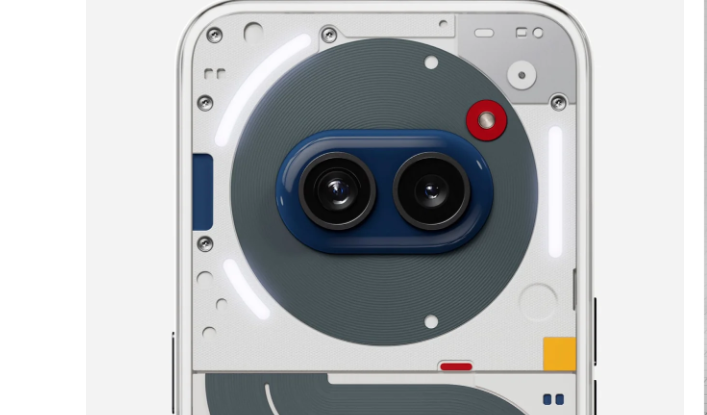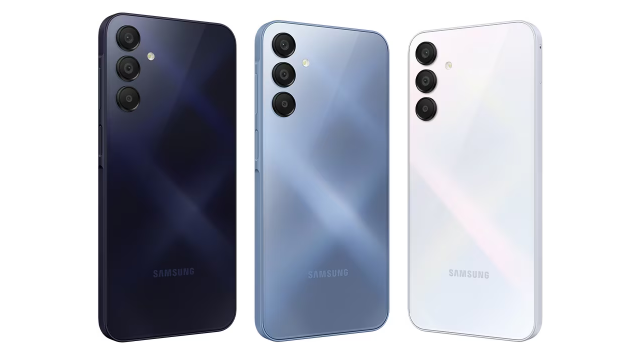Google Pixel 8a vs iPhone 15
| Feature | Google Pixel 8a | iPhone 15 |
|---|---|---|
| Weight | 188g | 171g |
| Dimensions | 152.1 x 72.7 x 8.9mm | 147.6 x 71.6 x 7.8mm |
| Screen size | 6.1-inch | 6.1-inch |
| Resolution | 1080 x 2400 | 1179 x 2556 |
| Chipset | Google Tensor G3 | A16 Bionic |
| RAM | 8GB | 6GB |
| Storage | 128GB/256GB | 128GB/256GB/512GB |
| Battery | 4,492mAh | 3,349mAh |
| Rear camera | 64MP + 13MP | 48MP + 12MP |
| Front camera | 13MP | 12MP |
| Pros | – Future-facing AI tools | – Dynamic Island |
| – Great design and color options | – 48MP main camera | |
| – Seven years of Android updates | – A16 Bionic chipset | |
| Cons | – Cameras are good, not great | – No zoom lens |
| – Battery life could be better | – 60Hz refresh rate | |
| – Not as cheap as it could be | – Can run a little hot | |
| Purchase Link | Check Amazon | Check Amazon |
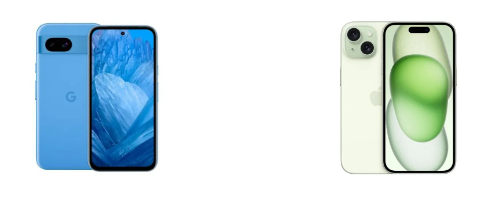
Google Pixel 8a vs iPhone 15
For many individuals, upgrading to a new smartphone often means opting for the latest iPhone, which currently is the iPhone 15. Boasting a sleek yet elegant design, intuitive software, extensive support, swift performance, and an excellent camera, it is considered to be all the phone one might need.
However, the introduction of the Google Pixel 8a might pose a challenge for Apple. It matches all those key features but comes at a considerably lower price point than the iPhone 15.
So how do these two phones stack up against each other? Has Google managed to offer a better deal with its latest mid-range model? Let’s explore the similarities and differences to determine which device is the better buy.
Google Pixel 8a vs. iPhone 15: Price and Availability
The Pixel 8a was released on May 14, 2024, making it newer compared to the iPhone 15, which was launched eight months earlier on September 12, 2023.
The Pixel 8a starts at $499 / £499 / AU$849 for the 128GB version, with an option to upgrade to 256GB for $559 / £559 / AU$949.
This pricing is significantly lower than the iPhone 15, which begins at $799 / £799 / AU$1,499 for the 128GB model, and $899 / £899 / AU$1,699 for the 256GB version.
This results in a savings of $300 / £300 / AU$650 with the Pixel 8a. For Apple’s phone to justify its higher price, it needs to outperform significantly in other areas.
Google Pixel 8a vs. iPhone 15: Design and Display
When holding both devices, the iPhone 15 clearly feels more premium. It features a flat metal frame and a sophisticated glass back, whereas the Pixel 8a has a rounded metal frame and a plastic back.
Despite the Pixel 8a’s comfortable textured matte finish, it doesn’t match the premium feel of the iPhone 15, which has a color-infused glass back.
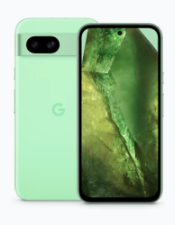
Visually, the iPhone 15’s uniform screen bezels emphasize its high-end status. In contrast, the Pixel 8a has thicker bezels, particularly noticeable around the chin. Additionally, the iPhone 15 has a superior IP68 rating, making it more water-resistant than the Pixel 8a’s IP67 rating.
The iPhone 15 also includes the unique Dynamic Island cutout, which is larger than the Pixel 8a’s hole-punch notch but more functional. It accommodates a secure Face ID system and provides widget-like notifications.
While the iPhone 15 has a clear edge in design, the display comparison is less straightforward.
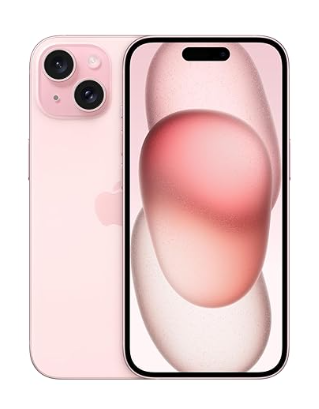
Both phones feature 6.1-inch OLED displays with a peak brightness of 2,000 nits. However, the iPhone 15’s screen is slightly sharper, surpassing the Pixel 8a’s FHD+ resolution with 1179 x 2556 pixels.
On the other hand, the Pixel 8a offers a significant advantage with a smoother 120Hz refresh rate. It’s hard to see how Apple justifies the iPhone 15’s 60Hz refresh rate.
Moreover, the Pixel 8a supports Always On display, a feature missing from the iPhone 15.
Google Pixel 8a vs iPhone 15: Cameras
Google’s Pixel phones are renowned for their impressive camera performance, and the Pixel 8a continues this tradition. It delivers excellent photo quality for its price point.
However, the iPhone 15 offers superior camera capabilities compared to most phones in its price range, including the Pixel 8a. Its camera system outperforms its less expensive competitor.
The Pixel 8a is equipped with a 64MP 1/1.73″ main sensor with an f/1.89 aperture, which is relatively modest in size. In contrast, the iPhone 15 features a 48MP 1/1.56″ main sensor with an f/1.6 aperture, allowing it to capture significantly more light. Additionally, the iPhone 15 boasts an advanced sensor-shift OIS system, which is more effective at stabilizing shots compared to the Pixel 8a’s basic OIS, enabling longer exposure times and enhanced light capture.
The 12MP ultra-wide camera of the iPhone 15 and the 13MP ultra-wide camera of the Pixel 8a are quite comparable, both offering fixed focus.
Both camera systems are supported by powerful custom processors: the A16 Bionic for the iPhone 15 and the Tensor G3 for the Pixel 8a.

While the Pixel 8a produces impressive photos, the iPhone 15 captures more detail and nuance, particularly in low-light conditions. Apple’s image processing results in more natural-looking photos, whereas Google’s tend to have a higher contrast.
The Pixel 8a excels with its AI-based auto-editing features. “Best Take” ensures everyone in a group photo is smiling, while “Audio Magic Eraser” removes unwanted background noise from videos.
Apple, on the other hand, enhances photo quality by capturing 24MP images and offering three primary focal lengths without any loss of detail. Both phones use sophisticated image processing techniques but apply them differently.
Google Pixel 8a vs iPhone 15: Performance and Software
Both phones are powered by custom in-house chips. The iPhone 15 uses the A16 Bionic, while the Pixel 8a features the Tensor G3. Although the Tensor G3 is newer, having debuted a year after the A16 Bionic, benchmark tests show the iPhone 15 still outperforms the Pixel 8a.
In everyday use, both phones are extremely fast and fluid, capable of running the latest games at high graphics settings. The Pixel 8a might feel quicker due to its 120Hz display.
The iPhone 15 has 6GB of RAM, whereas the Pixel 8a has 8GB, but this difference is negligible due to the differences between iOS and Android. Both phones offer 128GB and 256GB storage options.
Both devices run clean, minimalistic software with minimal bloatware, reflecting their manufacturers’ control over both hardware and operating system.
Choosing a winner in this category is challenging and largely depends on personal preference and software ecosystem allegiance. Currently, Android 14 on the Pixel 8a is more innovative, particularly with AI features like real-time in-call transcriptions and instantaneous voice typing.
Google promises seven years of software updates for the Pixel 8a, compared to Apple’s typical five-year support. While Google’s promise is more extended, Apple’s proven track record in supporting its devices provides greater reliability.
Google Pixel 8a vs iPhone 15: Battery
Neither the Google Pixel 8a nor the iPhone 15 excels in battery longevity, which is typical for powerful phones in a compact size.
The Pixel 8a features a 4,492mAh battery, significantly larger than the iPhone 15’s 3,349mAh battery. However, this size difference is not a definitive advantage since iOS is more energy-efficient than Android.
In practical use, the iPhone 15 typically lasts through a full day of intensive use, while the Pixel 8a may not always make it. This can vary based on individual usage and network conditions, but overall, the iPhone 15 has a slight edge in battery performance.
In our Future Lab testing, which involved continuous web browsing over 5G until the battery drained, the Pixel 8a lasted 11 hours and 21 minutes (at the default 60Hz refresh rate), while the iPhone 15 lasted 11 hours and 5 minutes. This makes the Pixel 8a a marginal winner in controlled tests, but the iPhone 15 remains competitive.

The iPhone 15 also supports slightly faster 20W wired charging compared to the Pixel 8a’s 18W, which is more beneficial given its smaller battery capacity. Both phones support 7.5W wireless charging, but the iPhone 15 additionally supports the 15W MagSafe/Qi2 standards.
Google Pixel 8a vs iPhone 15: Final Verdict
The iPhone 15 is undoubtedly a superior phone compared to the Pixel 8a, boasting a more premium build, a better camera system, and faster performance.
However, the price difference is significant: $300 / £300 / AU$650. This raises the question of whether the iPhone 15’s advantages justify its higher cost.
For many, especially those invested in the Apple ecosystem or who prefer iOS, the iPhone 15 will be worth the premium. It serves as an excellent entry point into the Apple world.
For those without a strong preference, the Pixel 8a offers a compelling alternative. It matches its pricier rival in many key areas and even surpasses it with a more fluid display and a longer support timeline.
Ultimately, the Pixel 8a provides a tempting option for those seeking a capable, compact smartphone without breaking the bank.
Recommended For You:
Nothing Phone 2a Review: Affordable Excellence with Unique Flair
Best Foldable Phones in 2024: Samsung Galaxy Z Fold, Z Flip, Pixel Fold, Moto Razr
iPhone 15 Pro Max Review: Is It Worth It?
Bose QuietComfort Ultra Earbuds Review
Best Rugged Phones To Choose From


